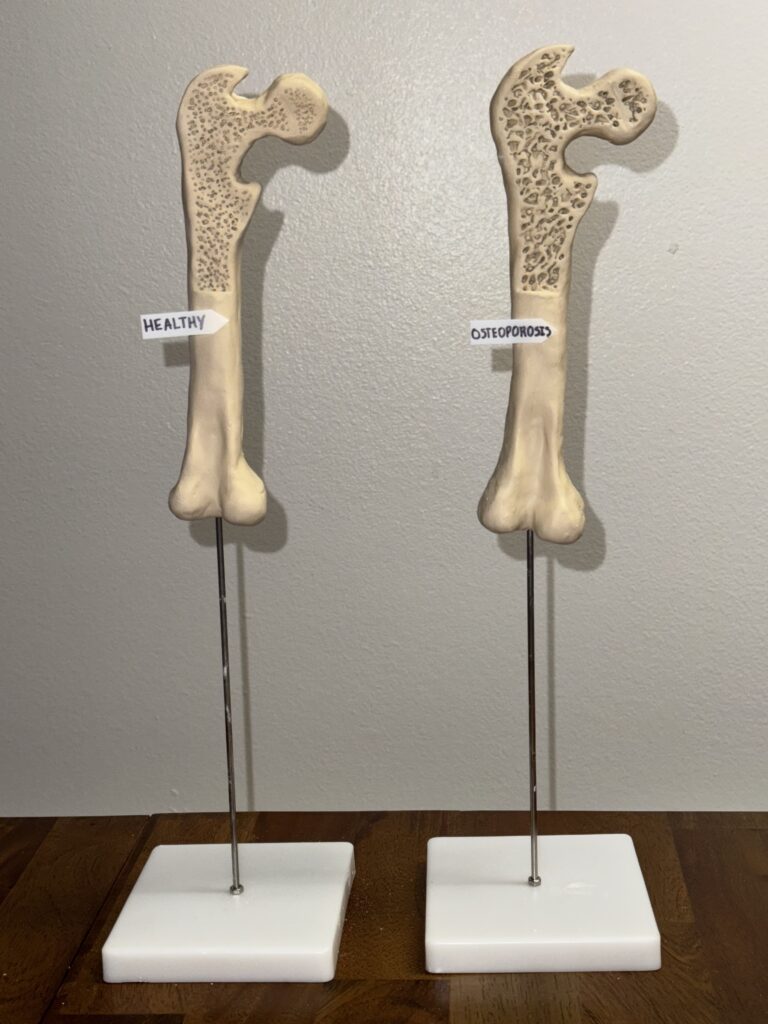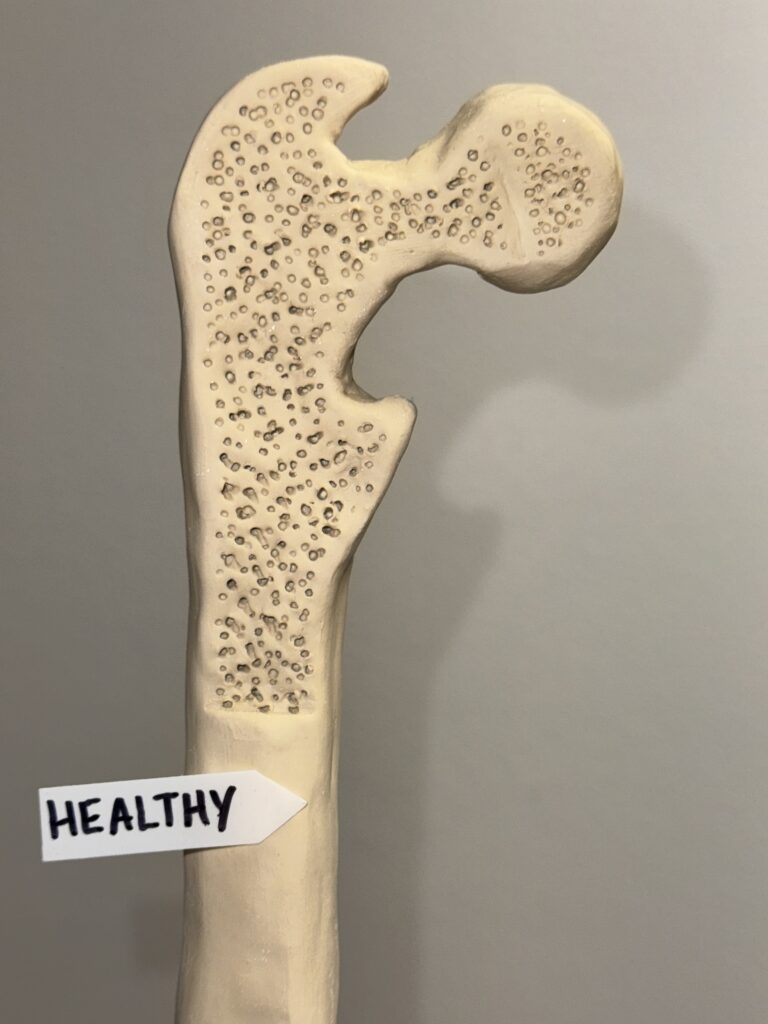Lifestyle and diet are a great contributor to possible osteoporosis. Low-impact exercise and a more passive lifestyle, A diet with low levels of calcium consumption, and living in a sunshine poor region can all lead to low calcium levels. As stated before, low blood calcium triggers PTH (PTH triggers osteoclast activity). These are all possible factors in Alaska, especially rural Alaska. Low levels of calcium and vitamin D have been found in native Alaskan women and men in studies among Native Alaskans and Navajo Native Americans(Frech et al., 2012). My research was more based on rural villages of Alaska where sunshine (vitamin D) and calcium through diet is limited. Through my own experiences residing in one of these rural villages in the Northwest Arctic Borough region. I have personally experienced the lack of fresh produce and many months of absent sunshine. Culturally, the Alaska native diet does not include much dairy to make-up for vitamin D. In the previously mentioned study there were very low levels of calcium intake which caused higher levels of fractures and more specifically hip/femur fractures (Frech et al., 2012). “The Alaska Department of Health and Social Services reports national rates of osteoporosis at 13-18% of women and 3-6% of men over age 50, but current evidence suggests that osteoporosis rates in Alaska are more equal between sexes… Alaskans over 50 years of age were significantly more likely to have osteopenia or osteoporosis.” (Guess, 2018). This is why Guess and their team has promoted and taken action to share information and raise awareness at state fairs and share articles online about vitamin D deficiency in Alaska and how that raises risk of osteoporosis.
I chose to display this disease through a clay model of the femur bone. One of the models is that of a healthy femur with a healthy level of bone mass density. The other model is that of a diseased femur with signs of osteoporosis clearly noted with the presence of a deteriorated bone matrix. The bone matrix is the osseous tissue within the bone that allows for support of the body’s weight and movement. When that bone matrix has been deteriorated then the bone becomes fragile like a bridge without interlocking supports or a house without support beams throughout the home holding the ceiling. In the diseased bone you can see wedges and holes in the bone matrix that can help those in Alaska (and elsewhere) to visualize the effects of a lacking diet/lifestyle and how that triggers PTH. It is all connected, but it does start with lack of the correct nutrients and conditions that with correct treatment or nutrition can be supplemented to at least slow down bone resorption. Maybe this can also raise awareness so that changes can be made to help this cause by the residents of rural Alaska (and others).




